Medieval individuals lived in an occasion whenever superstition was fact, and incredible things had been effortlessly acknowledged. These days, it’s challenging get these types of creatures as adorable beaver and the ever-loyal dog wrong, but in those days fabulous reports were considered nonfiction. To-be reasonable, they couldn’t exactly visit a pc and confirm what they’d heard. In fact, many never even discovered to read through. The couple of that have been fortunate to be taught how exactly to read frequently remained in quite similar place for most of their life. In the end, vacation had beenn’t rather since advanced level since it is today.
Compounding this issue was the fact not many brand new works of literary works were written during those days. But stories had been well-beloved, simply because they assisted ease the monotony and boredom. Individuals loved tales about creatures, while the information often originated in “bestiaries”—books that detail by detail reports and information of creatures. However, they weren’t exactly written but instead copied. Men and women must depend on the texts of such noted and smart folks as Pliny the Elder and Augustine of Hippo, who died quite a while ahead of the old.
Today, we have sites just like the Medieval Bestiary that provide a remarkable glance at the usually odd means medieval folks identified typical pets.
10Bees

Photo credit: Early United States Gardens
Recall the “birds and also the bees” talk? Well, they must have used one thing besides bees in medieval times. The reason why? Because, apparently, they didn’t believe bees had been “born” like typical animals. They were produced from rotting systems of oxen or calves. Often, it was stated they originated from worms that spontaneously created within the bodies of cattle. Additionally they believed the little buggers find the noblest bee included in this to be their master (unlike a queen) and they had conflicts.
The bees had been additionally thought to have a code of laws and regulations according to customs. There was no significance of things like punishing the wrongdoers or a death code; the lawbreakers effortlessly managed everything by themselves. These people were thought to punish themselves by committing suicide by stinger, because bee crooks apparently couldn’t keep to reside using their guilty conscience. Additionally, bees were categorized as wild birds. The tiniest of wild birds, in fact. Birds that started off as worms; perhaps the ancients appreciated paradox as much as we do.
9Mouse

Photo credit: Medieval Codes
The bee wasn’t the actual only real animal that medieval individuals believed “just happened.” Everybody knows exactly what a mouse is. It’s hard never to, considering they have been just about everywhere. In fact, there are plenty of those that folks decided they have to result from a source that was in the same way common because they were. Based on the professionals associated with day, mice originated from the ever-present soil. That’s actually in which their particular name came from—they got mus (mouse) from humus (dirt).
But not totally all specialists believed that mice had been just small dirtballs that decided to grow legs and a tail. Pliny the Elder wrote that mice conceived both by slurping each other or by sampling salt. Licking appears a bizarre solution to reproduce, but he’s the expert. Pliny the Elder additionally taught that Egyptian and Alpine mice had the rather unique top-notch walking on two legs. If you are frightened of mice, imagine a bipedal, mangy little mouse coming at you.
8Beaver

Picture credit: The Medieval Bestiary
Ah, the adorable little bucktoothed beaver, the bane of woods every-where, hated by river- and stream-owners alike. If you’ve ever done any beaver research whatsoever, you realize these were hunted for skins. But, relating to our set of medieval specialists, hunters couldn’t care less when it comes to epidermis of a beaver. These people were after a much complete stranger, more disgusting reward: the testicles. Poor people animal’s testicles were obviously used in making medicine.
But it gets a great deal, a lot even worse.
See, the beaver must have been rather a life-loving creature. With regards to had been hunted and knew it will be struggling to get-away, it made a dreadful option. It can give up its testicles to reside. Just How? It was quite simple. Those teeth that will cut through tree trunks with ease? It appears they were the right self-castration tool. The beaver would bite off unique testicles and throw all of them on hunter. It would surrender its manhood to keep residing. But what if the beaver must have the tension to be hunted because of its “goods” once again? It was a straightforward question of raising its knee to let the hunters know that these people were wasting their time chasing after a eunuch beaver.
7Cuckoo

The cuckoo bird. That little bird which comes regarding old clocks near the top of every hour? Based on the bestiaries, it had some unusual practices. For example, the cuckoos were poor and short-winged. This caused it to be tough for them to fly long distances. So the lazy small wild birds had an answer for this problem: they’d piggyback on a kite (the bird, perhaps not the doll). We’ve no clue how they might have done that.
Which wasn’t the only exemplory instance of the cuckoo’s laziness. It appears these birds didn’t like work that a great deal; in fact, they didn’t also take care of unique younger. They’d simply leave their eggs when you look at the nest of another bird after which continue their particular delighted small means. These were not just lazy, but also terrible moms and dads. But seems they did do one productive thing: Their saliva supposedly produced cicadas, those irritating small pests that love to keep you up all summertime.
It ought to be noted that some birds really do abandon their particular youthful in others’ nests, so do a few species of the cuckoo (such as the typical cuckoo). And so the medieval article authors actually did get something practically appropriate.
6Goat

Picture credit: The Medieval Bestiary
Goats tend to be fairly common pets. We’ve all understood about goats since we had been little young ones, mostly compliment of those wonderful stories about trolls under bridges. The medieval drawings and descriptions of goats had been in fact quite precise. Well, excluding the one thing. Evidently, the he-goats were extremely lusty creatures, and this caused their blood become exceedingly hot. So hot, actually, it would dissolve diamonds—the toughest natural material on the planet. Into the authors’ very own terms: a stone “so difficult that it can be wrought neither by metal nor fire.” We wonder how they went about testing this theory. In addition, how’d each goes about killing goats if they thought their bloodstream had been hot enough to melt diamonds?
5Ibex
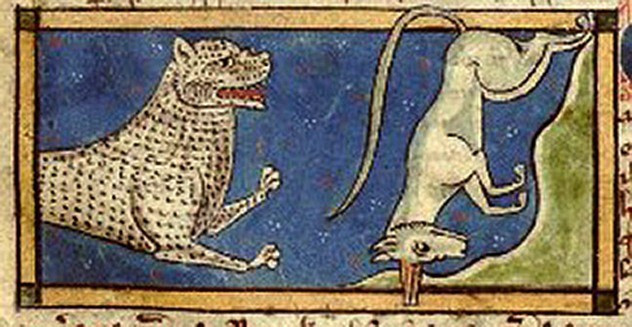
Photo credit: The Medieval Bestiary
After that there’s the goat’s relative: the ibex. Also referred to as “mountain goats,” the ibex would be best known today for hopping around on hills, oblivious to the fact that a single slip would deliver them to their fatalities. They also have spiral horns, employed for defense against predators and battling for prominence.
However, the ancients believed there was another use when it comes to horns. They mightn’t think that an animal could be amazing enough to hop around on hills without an integral protection against falling. They thought that in the event that ibex had been previously to slide, it can merely land on its horns (which they thought had been difficult adequate to not break). The ibex would just shake the fall-off, unharmed, and get back to its simple-life to be a ninja goat.
4Pelican
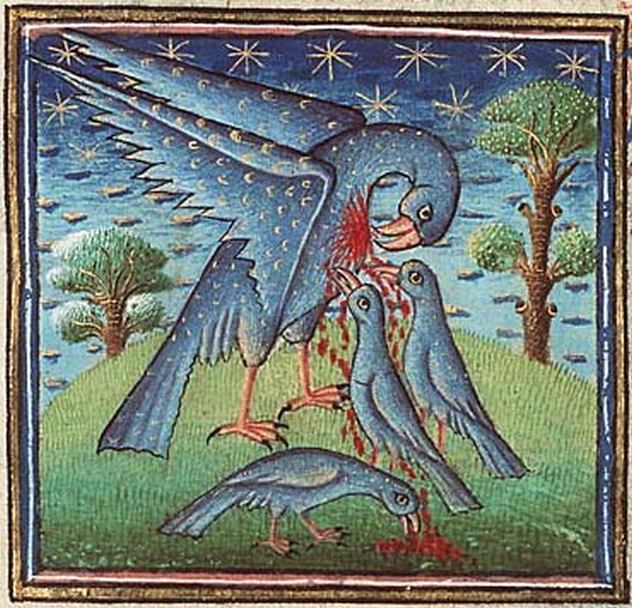
Picture credit: The Medieval Bestiary
The pelican may seem like an innocent enough animal. A pelican had been the mild, if somewhat crazy, friend of Ariel in the tiny Mermaid. You notice all of them nearby the ocean constantly. They often seem completely safe (though they can be rather aggressive). But to people surviving in medieval times, they have to have-been terrifying.
Pelicans have actually baby pelicans. That’s typical. But, in accordance with medieval bestiaries, whenever their infants pecked at them, the pelicans would drop their fury and strike the infants. Not just a little swat, either; they’d strike hard enough to eliminate. Yes, they killed their very own babies. However it all ended really; after three days, mother would peck by herself until she bled. If the bloodstream of these mom dropped on the dead children, they’d get back to life. But that is maybe not the thing the “experts” got incorrect. Additionally they thought that one type of pelican ate crocodiles. Crocodiles! That’d have to be one horrifying bird, a country mile off from the adorably clunky one we understand today.
3Dog
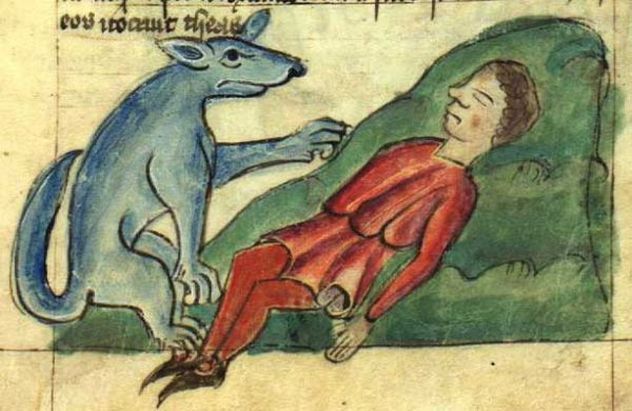
Photo credit: Medieval Ages
The dedicated puppy, man’s closest friend. Most of us understand what your pet dog is. We’ve hunted together with them, shared our meals together, taken care of them, and liked the furry goofballs since some one initially tossed a piece of meat to a wolf. But, if you believe the medieval outlook in it, they’re a lot more awesome. Very first, it absolutely was believed that dogs were not able to reside without guys. Having said that, these were acutely of good use creatures. They are able to heal their very own injuries by slurping all of them. But, more incredibly, joining a puppy to a patient would cure any interior wounds.
You will find tales informed of respect and bravery of puppies. Heard of King Garamantes’s puppies? The story goes this king had been captured by their opponents. He had been rescued but not by their military or their knights: He was rescued by his 200 dogs. In addition, the puppies then escorted the king returning to their lands, rebuffing any just who attempted to take him once again.
And then there’s the storyline of a man who was simply murdered. His dog loyally kept vigil over his corpse. The group that had collected round the dead-man couldn’t obtain the puppy to leave. The murderer, reasoning he could toss suspicion off himself, joined the crowd and moved to the body, feigning emotion. Canine saw him and, recognizing the guy given that murdering cutthroat, attacked him. Practically instantly, the killer confessed on murder and so the crowd would have the enraged puppy off of him.
2Weasel
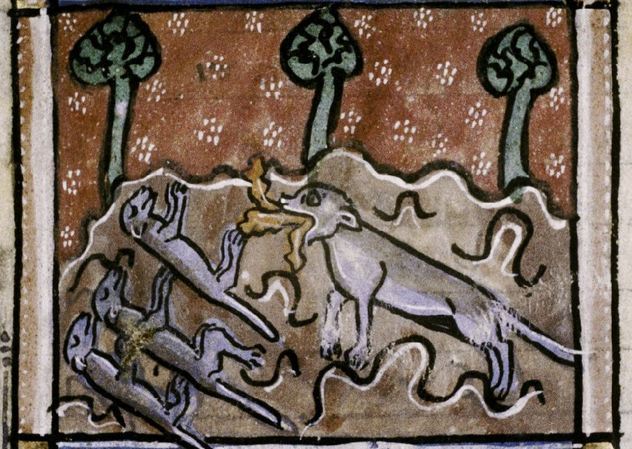
Picture credit: Got Medieval
The weasel is a tiny, ferret-like creature. The majority of us most likely have at the very least a vague notion of just what it appears to be like. Medieval people had less knowledge of this animal. Or, rather, they’d a strange, unusual notion associated with the weasel. First off, it had been a dirty creature that wasn’t to be eaten. Few consumers crave weasel snacks, making sure that part isn’t too much down. However things start to get instead . . . frustrating.
See, the weasel evidently conceived through the lips and gave birth through its ear. (Some specialists stated the exact opposite: Weasels conceived through the ear and offered delivery through the mouth. It’s hard to say which is even worse.) In the event that hottie arrived on the scene just the right ear, it might be a male; if it was birthed out of the remaining ear, it might be a lady. Oh, and when their infant had been injured while exiting the ear/birth channel? Absolutely nothing to it: considering that the weasel ended up being competent with medicine, it may restore its young.
1Panther
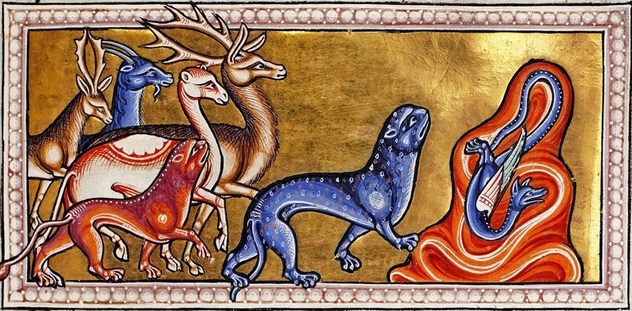
Photo credit: University Of Aberdeen
Ever heard of a panther? A photo of an actual you can be located here. Looks diverse from the main one overhead, doesn’t it? The truth is, that picture’s closer to the truth than any of other things medieval professionals believed in regards to the panther. They described it as a “gentle, multicolored beast whoever only enemy may be the dragon.”
Here’s how the typical panther’s life moved, based on our medieval resources: The panther would feast—on dragons, presumably. After it was finished with its scaly dinner, it would find it self a cozy cave and take a lengthy catnap; a three-day-long catnap, in fact. Then, with regards to woke, the panther will give a loud roar. While it had been booming, a sweet scent would emerge from its lips. All of the animals regarding the panther’s habitat would follow this smell on roaring panther, obviously bewitched.
Well, practically all. There is an exception: the mighty dragons. The massive, terrifying dragons would cower inside their little hidey-hole, due to the fact, for many not known reason, the panther scared the life span from them. Oh, additionally the creatures that visited the panther following its nap? No body actually discussed exactly what arrived of bewitched forest animals . . . but there have been just numerous dragons the “gentle” panther to eat.
